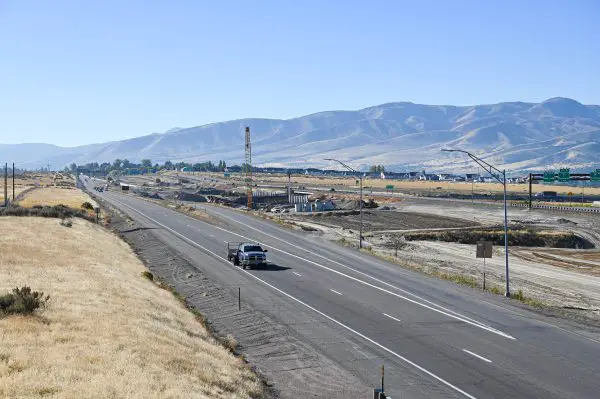Construction on the System Interchanges for I-86 and I-15 in Pocatello, which is being rebuilt by the Idaho Transportation Department, is well underway. The project is rapidly changing how the Interstate in Pocatello looks as part of Governor Little’s Leading Idaho plan.
The ramp from heading north I-15 to I-86 for westbound traffic was lowered, and construction on the new bridges recently began. Multiple temporary barriers have been placed, and when traffic is diverted away from work zones, drivers will notice lane striping modifications.
Conveyor belt system, cranes, and water trucks, seen at the project site
A conveyor belt system to transfer earth fill from one project area to another is one safety innovation in use. Crews may move materials without using trucks that enter and depart the Interstate thanks to the conveyor. Because of this, the work area is safer for workers and drivers. For their own safety, it is crucial that the general population avoid the conveyor system.
Also Read: US$68 million construction loan provided for Idaho Village Apartments
Cranes will start drilling shafts for new bridge piers in the project in the upcoming weeks. In numerous locations, excavators and other earthmoving tools are also at work to reprofile the soil. Water trucks are in use throughout the construction zones to reduce dust. Inspectors and engineers are also on-site daily ensuring safety and compliance with designs.
Water trucks are working nonstop to minimize construction-related dust. Additionally, ITD noticed more erratic lane shifts and traffic near the intersection, particularly close to the Pocatello Creek exit. However, with population growth and associated development that traffic is now significant.
The set-off of the I-86 and I-15 system interchanges project
The historic reconstruction of the I-86/I-15 System Interchange resulted from the necessity to upgrade safety and replace deteriorating bridges.
The 1960-era bridges are not faulty however they will be replaced due to their fast-advancing age. Failure to do so would force the imposition of stringent load limits, which would impede commerce.

